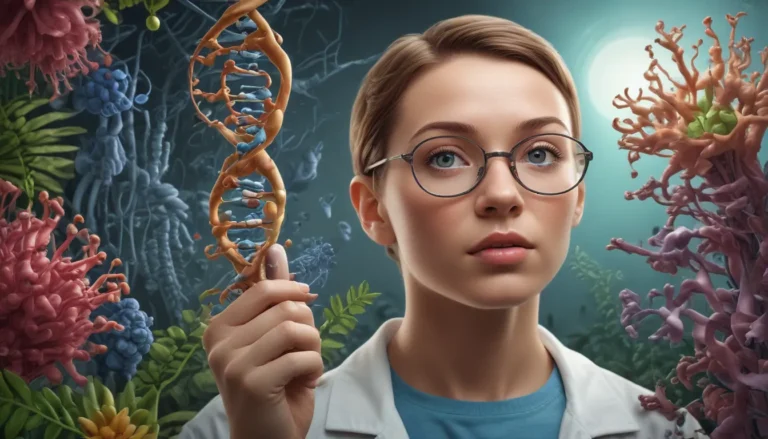A Note About Images: The images used in our articles are for illustration purposes only and may not exactly match the content. They are meant to engage readers, but the text should be relied upon for accurate information.
Plant physiology is a captivating field that offers a glimpse into the intricate inner workings of plants and their essential processes. From their ability to communicate and adapt to extreme environments to their remarkable reproductive strategies, plants hold a wealth of astonishing abilities that continue to fascinate scientists and enthusiasts alike. In this article, we will explore 19 fascinating facts about plant physiology that showcase the remarkable adaptations and survival skills of these incredible organisms. Whether you’re a scientist, horticulturist, farmer, or simply someone with a love for nature, the world of plant physiology is sure to inspire and awe you.
Unveiling the Astonishing World of Plant Physiology
Plants are far more than mere green decorations. They possess a wide range of incredible abilities that allow them to thrive and survive in diverse habitats. Let’s delve into the remarkable world of plant physiology and uncover the astonishing facts that make plants truly extraordinary.
Astonishing Facts About Plant Physiology
- Plants can “see” and react to light: Plants have specialized cells known as photoreceptors that detect light and trigger various physiological responses, such as growth, flowering, and leaf expansion.
- Plants can communicate with each other: Through the release of chemical signals, plants can communicate their needs and even warn neighboring plants about potential threats, such as insect infestations.
- Plants have their own immune system: Plants possess a complex immune system that enables them to defend against pathogens, ensuring their survival and health.
- Plants can change their sex: Some plants have the ability to change their sex depending on environmental conditions or pollinator availability, ensuring successful reproduction.
- Plants can taste: Plants have taste receptors that allow them to distinguish between different chemicals in the soil, aiding in nutrient absorption.
- Plants can “hear” vibrations: Recent studies have shown that plants can detect and respond to sound vibrations, enabling them to locate water sources or pollinators.
- Plants have their own circulatory system: Plants transport water, nutrients, and hormones through specialized tissues called xylem and phloem, similar to how our bloodstream functions.
- Plants can remember and learn: Plants have the ability to remember past experiences and adjust their behaviors accordingly to adapt to changing environmental conditions.
- Plants can produce their own natural sunscreen: Plants can produce pigments like anthocyanins in response to UV light exposure, acting as natural sunscreens to protect themselves.
- Plants can generate electricity: Some plants, such as the Venus flytrap, can generate small amounts of electrical energy within their cells to detect and capture prey.
- Plants can survive in extreme environments: Extremophytes, or plants adapted to extreme conditions, have developed mechanisms to thrive in deserts, high altitudes, and icy landscapes.
- Plants can produce chemicals with medicinal properties: Many plant species contain compounds with therapeutic properties that have been used for centuries to treat various ailments.
- Plants can sense gravity: Plants have cells that detect gravity, allowing their roots to grow downwards and their shoots to grow upwards (gravitropism).
- Plants can release scents to attract pollinators: Flowers emit scents to attract specific pollinators for successful reproduction through pollen transfer.
- Plants can regulate their temperature: Plants can adjust their temperature through thermoregulation to optimize their metabolic activities.
- Plants can heal themselves: When wounded or damaged, plants initiate a healing process by producing special tissues to seal off injured areas and prevent pathogen spread.
- Plants can change their leaf color: Some plants change leaf colors in response to environmental cues or as a defense mechanism.
- Plants can reproduce without seeds: Many plants can reproduce asexually through methods like vegetative propagation.
- Plants can produce natural pesticides: Plants synthesize compounds to fend off pests and herbivores, acting as their own chemical defense system.
Delving Deeper into Plant Physiology
The field of plant physiology is a fascinating and complex area of study that sheds light on the incredible adaptations and processes that enable plants to thrive in diverse environments. From photosynthesis, growth patterns, and defense mechanisms to reproductive strategies and responses to external stimuli, plants continue to captivate scientists and researchers worldwide. Understanding plant physiology is not only vital for agricultural practices and plant breeding but also for enhancing our broader knowledge of the natural world.
By exploring the inner workings of plants, we can uncover valuable insights that may help address global challenges such as food security and climate change. The intricate adaptations and physiological processes of plants offer a deeper appreciation for the vital role they play in sustaining life on Earth. Let’s continue to marvel at the wonders of plant physiology and the remarkable abilities of these extraordinary organisms.
FAQs: Exploring Plant Physiology
-
How does photosynthesis work in plants?
Photosynthesis is the process by which plants convert sunlight, water, and carbon dioxide into glucose and oxygen. -
What is the role of plant hormones?
Plant hormones, or phytohormones, regulate various physiological processes like growth, flowering, and response to environmental stimuli. -
How do plants respond to environmental stress?
Plants have evolved mechanisms to respond to stress, like closing stomata, synthesizing protective proteins, or producing signaling molecules. -
What is the importance of plant nutrition?
Plant nutrition is crucial for growth and development, with essential elements like nitrogen, phosphorus, and potassium being vital for metabolic processes. -
How do plants transport water and nutrients?
Plants transport water and nutrients through specialized tissues called xylem and phloem, ensuring essential substances reach different parts of the plant.
Final Thoughts
Plant physiology showcases the extraordinary abilities and remarkable adaptations that allow plants to thrive and survive in diverse environments. With their unique properties, plants continue to inspire curiosity and exploration, offering valuable insights for addressing global challenges and enhancing our understanding of the natural world. By appreciating the wonders of plant physiology, we can cultivate a deeper appreciation for the vital role that plants play in sustaining life on Earth. Let’s continue to explore and learn from the captivating world of plant physiology to unlock the secrets of these remarkable organisms.






